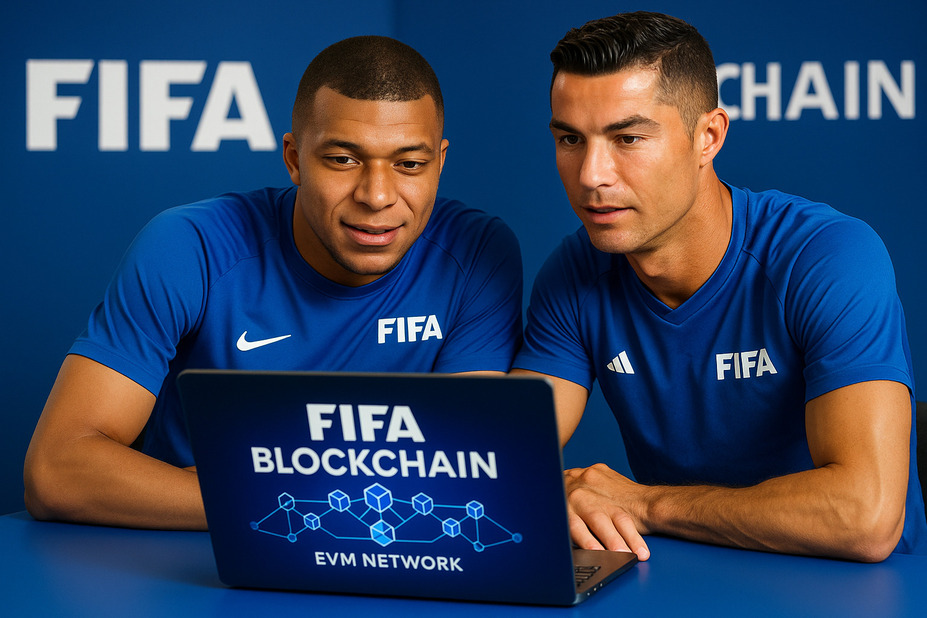What does FIFA’s decision to develop its own blockchain mean for its 5 billion fans

What is FIFA’s blockchain?
In May 2025, FIFA presented a new blockchain system called Avalanche Subnet. This was a big change for the organisation, as they stopped using the Algorand blockchain. This was the platform for FIFA’s first Web3 projects, such as the FIFA Collect NFT marketplace, which was launched before the 2023 Club World Cup in Saudi Arabia. The new blockchain is designed to support the development of FIFA’s blockchain-enabled products, including digital collectibles and gaming applications, delivering better performance, scalability and user experience.
What is FIFA’s plan for Web3?
FIFA’s decision to build its own blockchain using Algorand can be explained by a few things. The main reasons are that FIFA wants to have control over the infrastructure, the need for the blockchain to be able to handle more users, and for it to be able to connect to other systems.
How to control the platform
When FIFA started working with Algorand, it had to use a different system to manage its digital products. Algorand offered cost-effective and environmentally friendly transactions, but it was still quite isolated. FIFA is in control of the protocol layer because it has made its own blockchain. This means that the organisation can decide how to create assets, integrate games and manage user interaction with its products without relying on third-party solutions.
How big is this event compared to events in other parts of the world?
After the 2022 FIFA World Cup, it was revealed that FIFA has a reach of over 5 billion people around the world. During this tournament, more than 1.5 billion people watched the final match. The blockchain system needs to be ready for a big increase in demand during these major events. The way the Avalanche Subnet is set up means that FIFA can work on its own, away from the main Avalanche network. This makes sure that it has the bandwidth and management it needs to deal with busy times when a lot of people are using it.
Better developer and user compatibility
Unlike Algorand, which does not work with the Ethereum Virtual Machine (EVM), Avalanche subnets support the EVM. This means that the FIFA blockchain can now work with the large Ethereum ecosystem, and developers can more easily move smart contracts between the two. Users can also use familiar wallets such as MetaMask and Trust Wallet, which makes it easier for people to join the Web3 community.
It works with other blockchains
Avalanche offers its Subnet technology as a way for organisations to build their own blockchains. This means they can do this without having to worry about how they will be able to work with other blockchains. This matches what FIFA wants to do, which is to expand beyond simple collectibles. They want to introduce Web3 games and fan interaction tools that can run across multiple platforms.
It is worth noting that Avalanche subnets, like the one used for FIFA, are designed to greatly improve scalability. The main Avalanche chain handles around 4,500 transactions per second, but subnets can be adapted to achieve even higher throughput depending on the requirements of specific applications.
Find out more about the FIFA crypto platform and blockchain in sport
The FIFA blockchain is a special subnetwork that works independently, but also uses the Avalanche consensus model and infrastructure. Each subnetwork can have its own tokenisation, unique validators and specific smart contract logic. EVM compatibility means that developers can build decentralised applications using the Solidity language. FIFA can also integrate into larger decentralised financial systems and NFT ecosystems if needed.
This solution gives FIFA the best balance of scalability, performance and flexibility, which is not yet available on general-purpose chains for major sports applications. Users will now need to use EVM-compatible wallets, as support for the Algorand-based wallets previously used for FIFA Collect is being discontinued.
A blockchain for people who are interested in football
With the launch of FIFA’s new blockchain platform, fans are starting to see the first products and experiences created on the platform, including better digital collectibles, blockchain-based games and fan tokenised platforms.
FIFA Digital Collectibles
In June 2025, FIFA Collect, the organisation’s official digital collectibles platform, moved completely from Algorand to the new Avalanche blockchain. Fans can now keep shopping and sharing highlights from FIFA tournaments as NFTs (non-fungible tokens), with some of them having extra benefits. For example, users can get real-world benefits such as tickets to the 2025 FIFA Club World Cup or exclusive drops related to the 2026 FIFA World Cup. The FIFA Collect platform has been made easier to use by improving how it works with wallets and making transactions faster. Modex will check that the platform is developing in the right way.
A mobile game where you can truly own your digital content
FIFA is now getting involved in the world of blockchain gaming too, with a new mobile game called FIFA Rivals. This was developed by Mythical Games and Bacon Games. The game will be available all over the world in June 2025, which is when the Club World Cup is happening. FIFA Rivals is not like regular football games. It has two types of gameplay: arcade and fantasy. Players will put together and customize their teams, take part in live matches and collect digital player cards that are presented in NFT format. These in-game items will be exchangeable on the Mythos blockchain, meaning fans can actually own what they earn or acquire and take those assets outside of the game.
A symbol that brings people from all over the world together
FIFA’s blockchain is also creating opportunities for new ecosystems run by fans. One of the most notable projects is 0xFútbol, a community initiative developed at Avalanche that aims to bring fans closer to the game through digital ownership and active participation. The platform was launched in June 2025. It uses the FUTBOL token, which makes it easy to use various apps and games.Fans can use the token to take part in prediction markets and quests, and to get rewards for their activity. The main goal is to give fans more chances to get involved in the sport itself.
How fans of FIFA are using Web3
FIFA’s move to its own EVM-compatible Avalanche-based blockchain is a big change for fans around the world who want to interact with their favourite sport. By making it EVM compatible, FIFA lets fans use popular wallets like MetaMask and WalletConnect. This change makes it easier for people to use the platform, especially those in developing countries. Previously, users had to have special wallets to use Algorand. This makes it easier for fans to take part in digital collectibles, games and other blockchain activities.
From watching to doing
The new blockchain infrastructure lets fans get involved instead of just watching. With platforms like FIFA Collect and games like FIFA Rivals, fans can own digital assets, earn rewards and take part in interactive activities. Projects like 0xFútbol let fans get involved in the game by investing, have a say in the decisions that are made, and get to experience more of the game.
Fans’ interests are organised into groups around the world
FIFA’s new blockchain system is creating a global marketplace where digital rights and loyalty programmes will be traded. How much you engage digitally will determine the benefits you can access. These include special content and unique match experiences. The use of blockchain technology by FIFA is a step towards a more connected and active future for football fans around the world.












